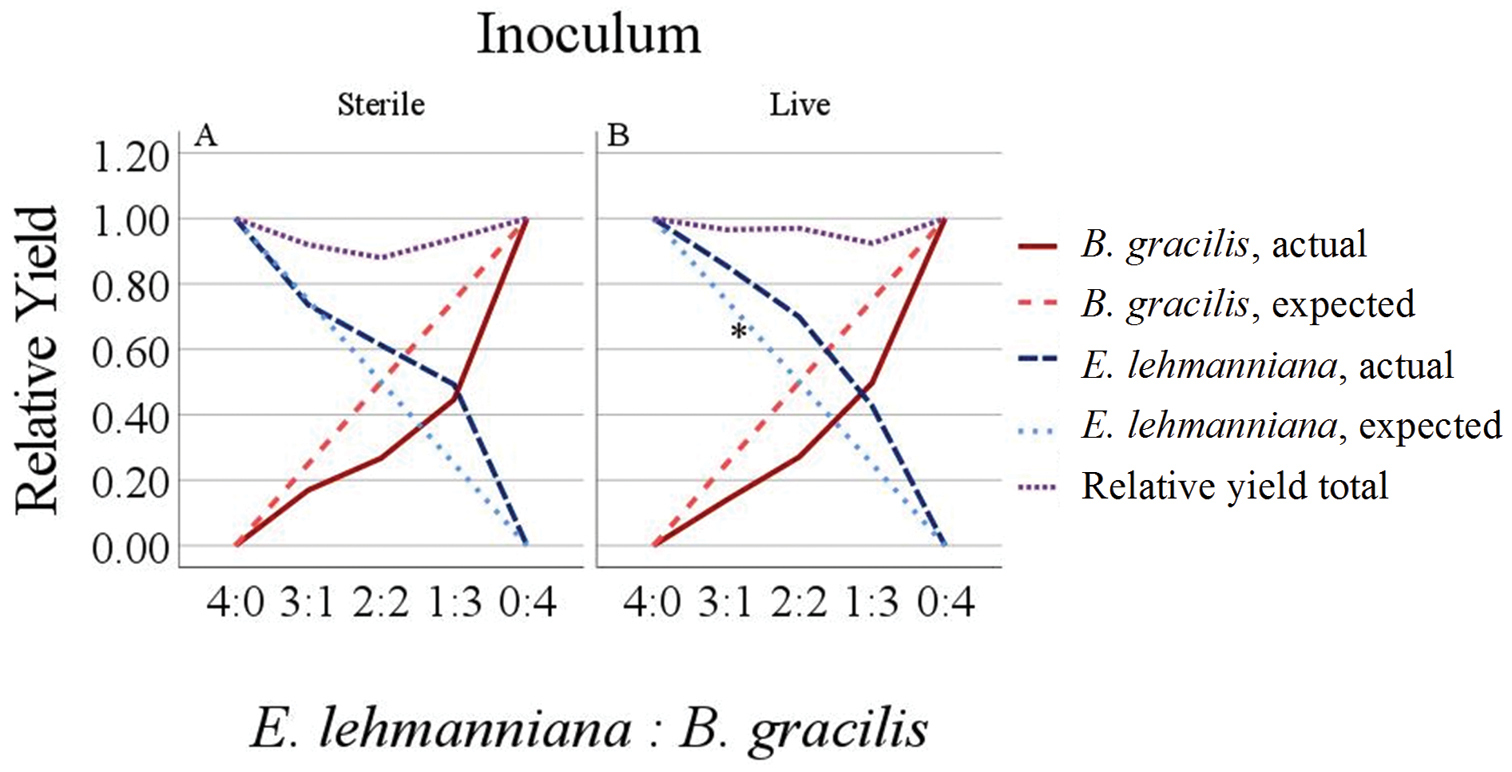
|
||
|
Replacement series competition study of relative yields of B. gracilis and E. lehmanniana across competition ratios grown in soil cultured with A sterile and B live inoculum. Soils were conditioned for 12 weeks by E. lehmanniana. Plants were grown for 12 weeks prior to harvesting in the response phase. Soil inoculum collected from sites of known lovegrass invasion times on Appleton-Whittell Audubon Research Ranch, Sonoita, AZ. The expected (hypothetical) lines represent the relative yield that would be expected if species did not compete with one another (e.g., the relative yield for a species A, planted with a competitor B, at A:B planting ratios of 0:4, 1:3, 2:2, 3:1 and 4:0 are 0, 0.25, 0.5, 0.75 and 1, respectively). If one species is outcompeted, it will yield less than expected and its curve will shift to below the expected line. The line for relative yield total will be convex for facilitation or concave for competition. The superior competitor will yield more than expected and its curve will shift to above its expected line. The asterisk indicates the proportion of E. lehmanniana at which plant soil feedbacks increased E. lehmanniana yield relative to yield in the sterile soil pots. |